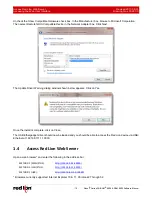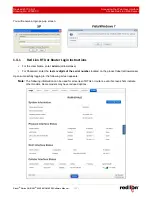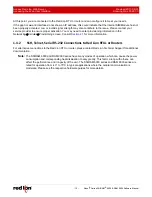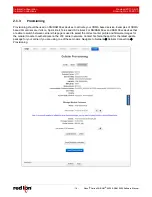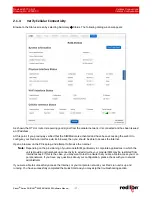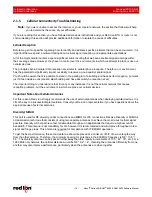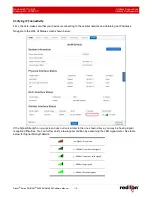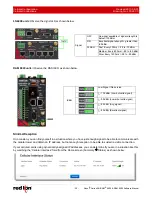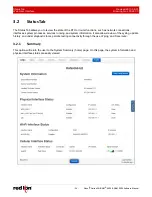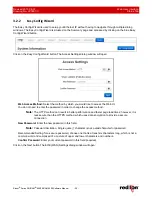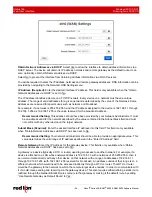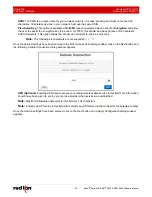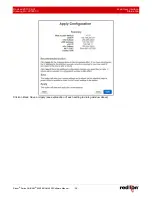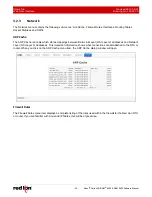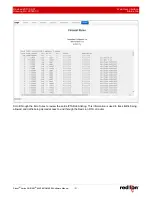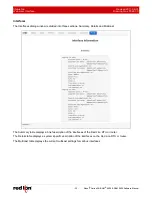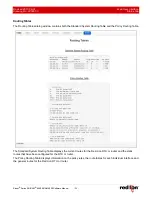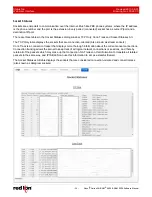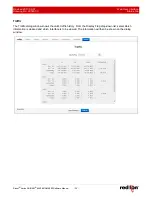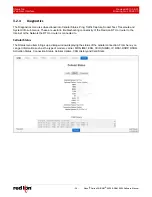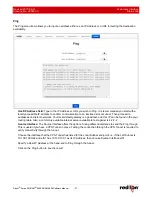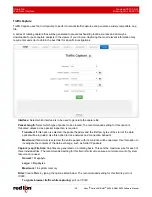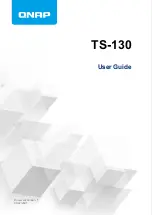
Revised 2017-08-31
Web User Interface
Drawing No. LP0997-C
Web User Interface Introduction
Sixnet
®
Series SN/RAM
®
6000 & RAM 9000 Software Manual
- 23 -
Chapter
3
Web
User
Interface
3.1
Web
User
Interface
Introduction
3.1.1
Organization
The Red Lion Web UI is comprised of six major sections.
(Click on a link to get an in-depth description of each topic)
•
Status:
The Status tab presents information on the RTU or router. This tab is organized into six (6)
sections: Summary, Easy Config, Network, Diagnostics, Syslog and Gather Stats.
•
Admin: The Admin Tab is used to configure how the Red Lion RTU or router is accessed, update the
firmware, reset the system defaults, set the system time and reboot the RTU or router remotely. This tab is
organized into eight (8) sections: Access Settings, System Time, Certificate Manager, Firmware Update,
Configuration Manager, Package Installation, Factory Defaults/Reboot and Job Control.
•
Network: The Network Tab is used to configure settings that connect the RTU or router to external
interfaces. The Network tab is organized into eight (8) major categories: Cellular Connections, Interfaces,
Firewall, Tunneling, DNS Settings, Static Routes, DMNR/NEMO and TCP Global Settings.
•
Services: The Services tab is used to configure the various features of the Red Lion RTU or router. These
services include DHCP Server, DHCP Relay, Dynamic DNS, SN Proxy Settings, SixView Manager, GPS
Settings, SSH/TELNET Server, SSL Connections, SNMP Agent, Ping Alive, Crimson Connect, Email
Client, SMS Handling, RAMQTT Client, SD Card Manager and Serial IP.
•
Automation: The Automation menu contains all aspects of managing your Modbus and DNP3 based I/O.
The Autmation tab is organized into the following categories: Local Station, Serial Ports, Tags, Data
Logger, Modbus, DNP3 and I/O Settings.
•
Advanced: The Advanced Tab is used to configure the advanced features of the Red Lion RTU or router,
which include IP Fallback, IP Transparency, Out-of-Band Management, VRRP, Expert Mode, GWLNX,
Classic View and About.
•
Events: Events are used to apply a series of logic checks to a register(s) that allows the user to program an
action based on the content of a specific register.
All tabs are described further in the manual as well as functionality of each dialog window.


